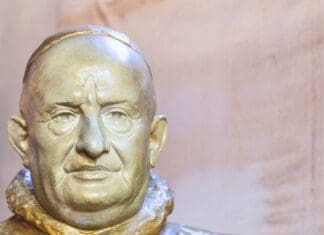Pope Saint Clement
Saint Clement, early Christian leader and Bishop of Rome, revered by the Petrine faction, distinct from Pauline followers.
Pope Saint Leo the Great
Pope Saint Leo I is one of the only two Popes in two thousand years to be called "the Great," renowned for dissuading Attila the Hun from sacking Rome in 452.
Pope Saint Evaristus
Pope Saint Evaristus was the fifth pope, holding office from circa 97 to 105. He was also known as Aristus. Little is known about Saint Evaristus.
Pope Saint Callistus
Pope Callistus I, a former slave, merciful leader, championed forgiveness, faced adversity, he shaped the early Church's compassionate direction.
Pope Saint John XXIII
Pope Saint John XXIII's journey from humble beginnings to transformative papacy showcases a life of service, faith, and evangelical simplicity.
Pope Saint Cornelius
Pope Saint Cornelius faced challenges from apostates and the Rigorists, but upheld that repentant lapsi could rejoin the Church with proper penance, before dying a martyr.
Pope Saint Gregory The Great
Pope St. Gregory, born into Roman nobility, became a monk, then Pope. Known for reforms, he championed the poor and introduced the Gregorian Chant. Celebrated on his election day.
Pope Saint Zephyrinus
The pontificate of this first third-century pope was to see a storm of heresy rage around the pontiff, who had to keep a firm hand on the tiller of Peter's barque.
Pope Saint Pius X
Pope St. Pius X (1903-1914) Perhaps nowhere in the history of the Church is there a better example of a man possessed of so many of the saintly virtues—piety, charity, deep humility, pastoral zeal, and simplicity—than in Pope St. Pius X.
Pope Saint Pontian
Pope Saint Pontian, who reigned from 230-235, holds the distinction of being the first pontiff to abdicate.























